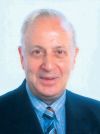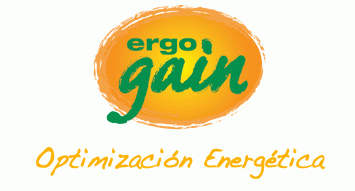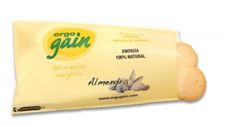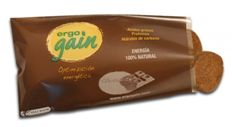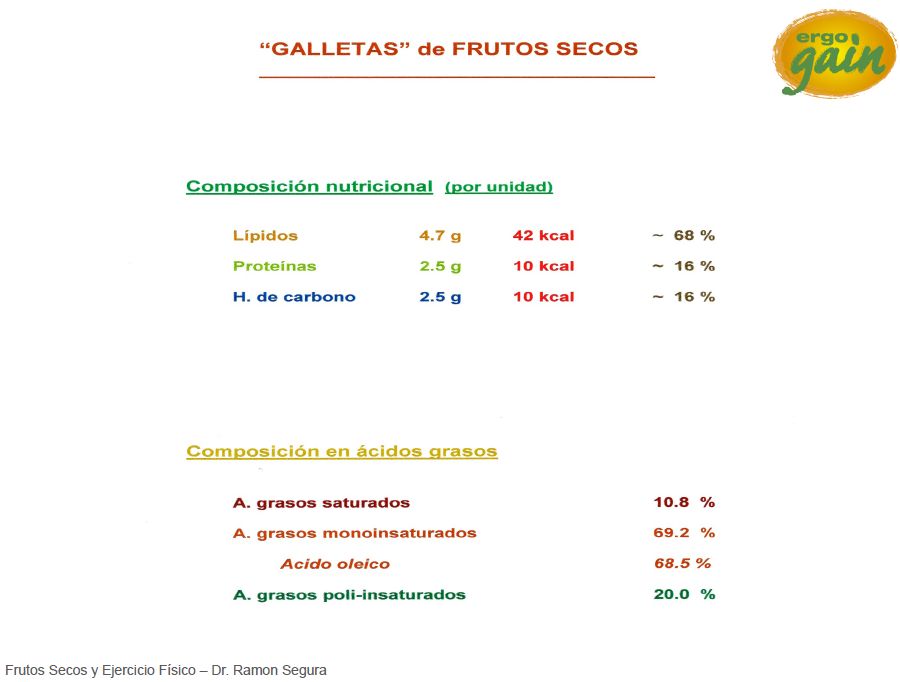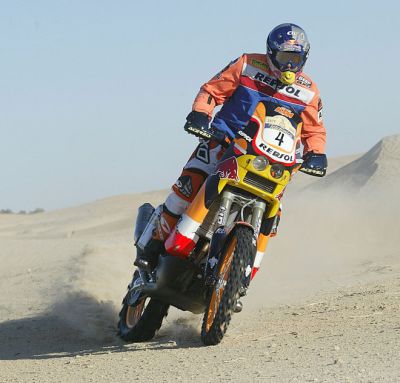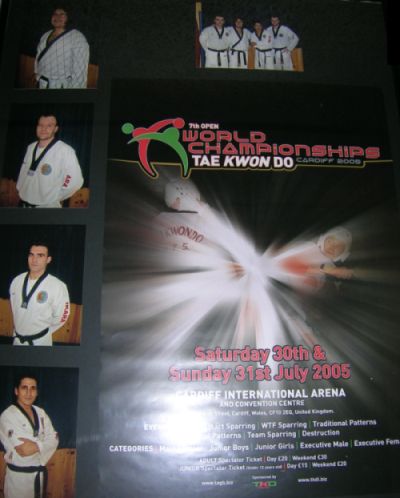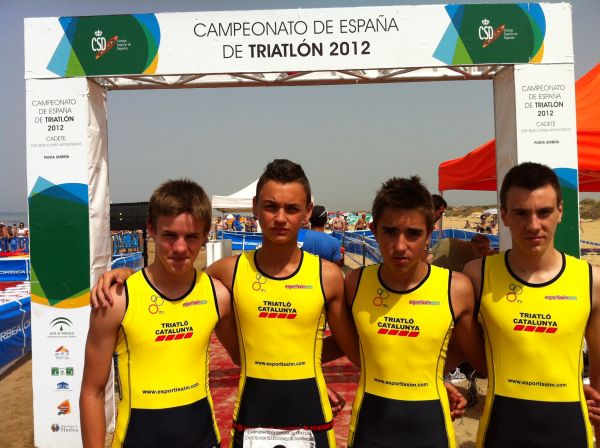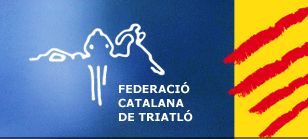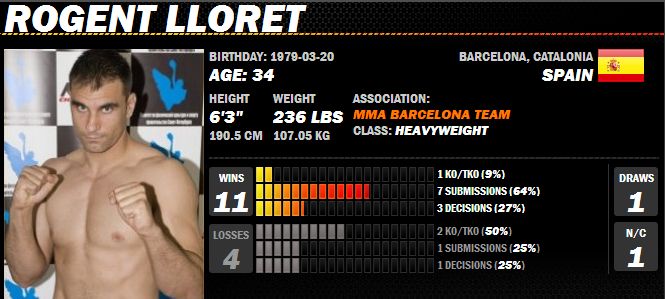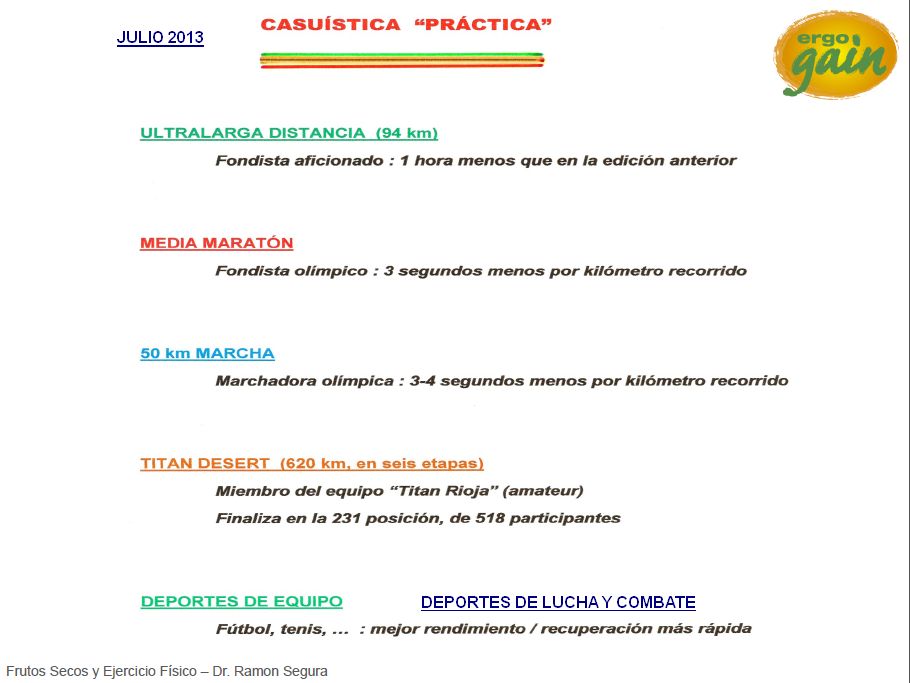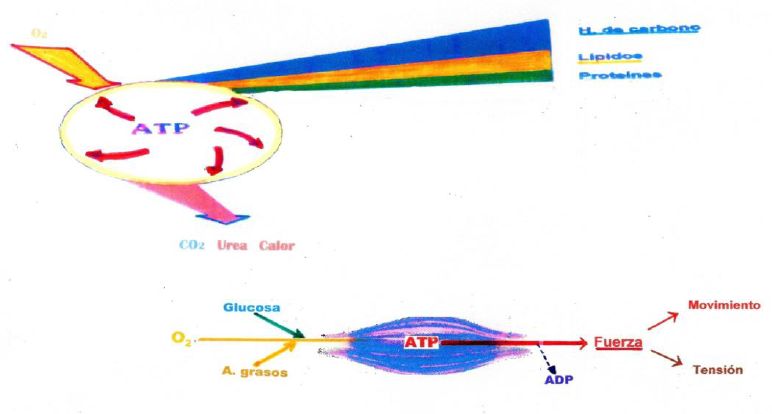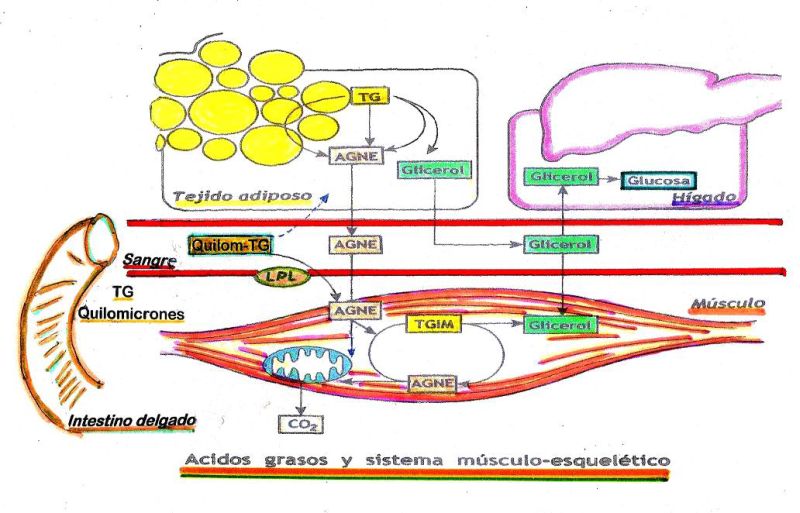|
English - Español
E N E R G Y O P T I M
I Z A T I O N
Ergogain
Ergogain that offers the possibility of
making, according to the intensity of exercise, a naturally nutritional,
balanced and high energy content product.
Ergogain cookies have been designed and developed under the guidance of Dr. Ramon Segura.
Dr. Segura is Professor Emeritus of Physiology at the
Medical School, , Professor at the Professional School of Sports
Medicine and Physical Education and Co-director of the Master in
Underwater and Hyperbaric Medicine, at the University of Barcelona.
Since
2008 is a member of number, elected to the Royal Academy of Medicine of
Catalonia.
After a few years as Assistant Professor of Biochemistry and Physiology at the Faculty of Medicine of the University of Barcelona, Dr. Segura moved to Houston (Texas) where he worked as a Research Associate at the University of Houston, between 1969 and 1971, and , from 1971 to late 1975, as Assistant Professor in the Department of Medicine at the Baylor College of Medicine) of Houston, located in the spectacular health center known as Texas Medical Center, working primarily on the metabolism lipids and lipoproteins. From 1976 to 1986 he was Professor and Chairman, Department of Physiological Sciences, in the Faculty of Medicine of the Autonomous University of Barcelona, where he served as Vice-Chancellor during the years 1978-1982. In 1986 he won again, by public competition, the position of Professor of Physiology in the Faculty of Medicine of the University of Barcelona where he conducted his teaching and research activities until 2005 when he was awarded the Professor Emeritus status. During these years he also served as Co-Director and Professor of the Master in Nutrition of the University of Barcelona. Dr. Segura has had numerous contacts with members of the Biomedical Division of the Johnson Space Center (NASA) in Houston, where, in 1992, carried out a research stay and developed a personal method to evaluate various biochemical parameters in micro-blood samples in astronauts participating in missions conducted at the Space Station. Dr. Segura has published 12 books and has written 32 book chapters devoted to topics of their specialty. He has published over 150 scientific papers in international journals on topics related to lipid metabolism, nutrition, exercise physiology and sports, ... and 45 scientific articles in various magazines and newspapers. He has presented 130 papers at conferences and scientific meetings. Since 1981, Dr. Segura has directed 34 doctoral theses carried on topics in physiology and pathophysiology. He has taught numerous courses on nutrition, metabolism, exercise, etc.. and has given more than five hundred lectures, presentations, ... (by invitation) in various forums and meetings at national and international levels. He was president of the Catalan Society of Endocrinology and Nutrition (1981-1983) and vice president of the Spanish Society of Endocrinology (1981-1983). He is a member of the Catalan Association of Food Science of which he was a co-founder and vice president during the years 1981-1983 and a member of its board of directors during the period 2008-2012. Apart from these scientific and professional societies, he is a member of the Academy of Medical Sciences of Catalonia and the Balearic Islands (1957 - ...), the College of Physicians of Barcelona (1960 - ...), the Spanish Society of Biochemistry (1968 - ...) the Catalan Society of Biology (1971 - ...), the American Oil Chemists' Society (1973 - ...), the New York Academy of Sciences (1980 - ...), the International Society for the Study of Fat and Lipids (2004 - ...). .... He has been a member of the Editorial Board of several scientific journals, among them, the “Revista Española de Fisiología” (later converted into the Journal of Physiology and Biochemistry),” Medicina Clínica”, Insider, a trimonthly publication where the most prestigious experts in sports nutrition and exercise wrote review articles and their own experiences. Apart from having a wide experience in research on physiology for health and athletic performance, Dr. Segura has advised and controlled, from the functional and nutritional point of view and nutrition, sports numerous sport practitioners from different specialties, from the rider Joan "Nani" Roma (participant in 9 of the Dakar Rallies and winner in the 2004 edition) Lloret Rogent wrestler (BJJ European Champion in 2009 and international competitor MMA) athletes and coaches of the BSE-Sport Training Barcelona, ... In particular, and with a special focus, he has advised the playersof the first team of FC Barcelona, from the time of coach Loui van Gaal during the1999-2000 season and onwars and, with special dedication as Nutritional Advisser to the F.C. Barcelona during the 2009-2010 , 2010 -2011 and 2011-2012 seassons, with Pep Guardiola as coach. Dr. Segura, throughout his career he has received numerous awards and honors including the Dr. Cardinal and Dr. De Chopitea Award of Sports Medicine (1992), the European Foundation Universitas Award (1992 ), the Medal of the Autonomous University of Barcelona (1993), the Award for Research in the Chronic Fatigue Syndrome (2007), the Award for Professional Excellence in Medical Education (2008), ...
What is special about ergogain cookies? What is special about Ergogain cookies that do not have other energy products?
Almond proteins contain a significant proportion of the amino acid arginine which can not be synthesized by our body. This amino acid acts as a precursor to a series of products that help dilate blood vessels and promote blood flow, are involved in regulating the body's metabolism and detoxification processes, stimulate muscle protein synthesis, etc.
Why shaped as a cookie?
Dr. Ramón Segura.
Product: Ergogain Cookies
Ergogain, a prepared natural Nuts based, which provides
about 510 kcal / 100g of product (51 kcal per wafer), 65% of them from
their fatty acids (mainly oleic acid) and the remainder, almost equally,
from carbohydrates and proteins. Ergogain has been designed for your use
in moderate-intensity exercise submaximal, with the aim of:
Food and Sports Tips · Intake Recommendations
Intake Recommendations The intake of Ergogain cookies while performing physical exercise must be adjusted to the type of effort and personal characteristics of each (physical condition, age, weight, degree of training, ...).
Mountaineering
• 3 cookies half hour before starting the activity Marathon
• 4 cookies half hour before starting the test Triathlon
• 4 cookies before half an hour before starting the test Cross Country
• 4 cookies half an hour before starting the activity Alpine Skiing
• 4 cookies half an hour before starting the session Tennis
• 2 cookies half an hour before the game Team sports Football
• 4 cookies half hour before the competition Basketball, Handball, ....
• 4 cookies half hour before the game In any case, the pattern should be adapted, in accordance to personal experience, to when is best suited to the characteristics of the person and assessing their physical condition, in particular, the metabolic response and the "feelings" that everyone has throughout the trial and in the hours after the effort.
Dr. Ramon Segura.
Concept: Energy Optimization Our organs and all and each of their constituent cells require an uninterrupted flow of matter and energy to ensure maintenance, repair and/or expansion of our bodily structures and, in turn, to provide the required energy for all "active" components of our organs to carry out their corresponding functions. While carbohydrates, lipids and proteins, ultimately produced by plants, are those that provide the "life energy" that we need they do not have, by themselves, the ability to run directly our organs and systems. All the energy supplied by food must be transferred first to a universal composite present in all cells, known as adenosine triphosphate (ATP), the only compound directly usable as an energy source. Adenosine triphosphate, or ATP, is used to perform two types of work: one internal, that we do not perceive directly but allows us to experience the sensation of well being and another of external character, manifested as the ability to move, perform daily living and professional activities or practice some kind of sport. The amount of energy used, usually in the first process (the "inside work") is much higher than that spent in the second (the "external work") associated with daily activity or exercise. Being ATP the only compound capable of being used "directly" as a source of energy by our cells, it is surprising that its concentration in the same (particularly, in the muscles) be so minimal that requires the need for appropriate mechanisms for its regeneration in the same amount and pace with which is being used. When performing a physical exercise, muscles have three main substrates to regenerate the adenosine triphosphate (ATP) that is spent in the process of contraction: 1. - There is a small amount of a compound endowed with the same energy value as ATP called creatine phosphate (or fosforilcreatine) that allows the regeneration of ATP with maximum speed and intensity. This compound is used in the first seconds of a supramaximal type effort and every time that the exercise requires an increase in the pace of the work that is being done. 2. – Our body can obtain the energy necessary for physical exercise from glucose, of which it has significant quantities stored as glycogen in the liver (about 80 grams) and in the whole of muscles (300 to 500 grams, depending on the degree of training and type of diet followed by the athlete)]. Glucose released from such reserves can be used in two ways: by degradation to lactic acid when there is no adequate oxygen supply, in which case only a little over 5% of the potential energy of glucose is being used and, moreover, leaves a “contaminant” residue, lactic acid, which disrupts the normal development of muscle activity and quickly leads to muscle fatigue. When oxygen supply is appropriate to the intensity of the effort being made, the muscles can obtain 100% of the potential energy of glucose through its complete oxidation to carbon dioxide and water (two “non contaminant” compounds). It has been known for many years that the greater the muscle stores of glucose (as glycogen) the best will be the athletic performance and greater the endurance time to fatigue. However, one must bear in mind that the glycogen stores are relatively limited and, furthermore, when a certain degree of reduction in the content of this polysaccharide is reached an exponentially increases in the perception that exercise requires each time more "mental" effort, a fact that may result in a decreased ability to maintain the desired pace. 3. - Unlike the limited energy reserves as glycogen, our body energy reserves are much higher in the form of triglycerides (or fat) from which the muscles can obtain the corresponding fatty acids to be oxidized to carbon dioxide and water (obtaining per gram of fat a quantity of energy over two times higher than that provided by one gram of glucose). Most of the triglyceride reserves are in the subcutaneous adipose tissue, with an uneven distribution in the body, and to a lesser extent, in the abdomen, as part of the so-called visceral fat. In the form of triglycerides our body can store from 10 to 15, 20, ... kg with a potential reserve of energy of the order of 90,000, 135.00, 180.000, .. kcal (compared with the 1200 to 2000 kcal that can provide the muscle the glycogen stores). However, this system which is "extensive" (much potential energy distributed over extensive areas of our body) is very little "intensive" in the sense that it can not supply large amounts of energy per unit time and, moreover, it releases it at a very slow pace. Thus, the fat (and their corresponding fatty acids) stored in the subcutaneous adipose tissue and / or visceral fat, by itself, satisfies only the energy requirements associated with efforts of low to moderate intensity. On the other hand, it has been found that when the intensity of effort is higher than 25-30% of the maximum, the fatty acids released from adipose tissue, can not explain the total amount oxidized by the whole musculoskeletal system. This fact has forced to seek other sources and led to the discovery that, in the muscle or cell fibers themselves there is a significant reservoir of fatty acids (in the form of fat droplets) that can vary between 400 and 500 grams (with a total energy potentially available, of the order of 3500-4500 kcal, significantly higher than that available in the form of glycogen). This type of Intramuscular fat, in addition to being located in the muscle fibers themselves, has the advantage that fatty acids are made available immediately, without the delay which involved in the stimulation, release, transport, ..., processes that are required in the mobilization of the reserves present in the adipose tissue. Such triglycerides, known as "intramyocellular" fat, can be used in a significant proportion in intensity efforts up to 85% of the maximum. It is estimated that in a football game, this source of fatty acids may contribute up to 50% of the energy consumed during the competition allowing therefore to spare muscle glycogen for the moments of greatest intensity and to maintain the sense of well being for more time (it is known that the perception of effort is inversely related to the concentration of muscle glycogen and when this is reduced below a critical value, the feeling that the exercise is becoming harder and heavier increases exponentially). In order to get the fat droplets, present in the muscle fibers, to reach the maximum possible size, it has been observed that the ingestion of an adequate amount of dietary fat (like that present in almonds), preferably about 60 to 90 minutes before a game or competition, allowing to have a “locally” higher fatty acid reserves at the time of initiating the effort and, at the same time, if one continues to furnish, slowly but steadily, approximately, every 20 to 40 minutes, fatty acids absorbed from the intestine (as these are the preferred ones over those that can come from other sources), the muscle fatty acid droplets can be kept in an acceptable size along the whole exercise. Dr. Ramon Segura.
Athletes
Fútbol F.C. Barcelona Team Dr. Segura with Master Paco Seirul•lo have formed a luxury tandem to help the players of FC Barcelona to optimize their performance. In particular, and with a special dedication, has advised members of the first football team of FC Barcelona, since the times of Loui Van Gaal as a coach, 1999-2000 season onwards, informally and at moderate dedication to their work, formally and at marked dedication as Nutritional Consultant of the club during the seasons 2009-2010, 2010-2011 and 2011-2012, with Pep Guardiola as a coach. From the
earliest years, Dr. Segura was already designing special prepared drinks
with the same energy optimization principles that ergogain cookies. September 1999 - July 2012
Nani Roma - Piloto Rallyes
Winner of Paris-Dakar bikes 2004
FMAC - Taekwon-do FAMC Martial Arts Federation d'Catalunya. Campenato Open World Taekwon-do 2005. On july 30th and 31, 2005, took place in the city of Cardiff, capital of Wales, the seventh world championship Open Taekwon-do. Competitors representing more than 50 countries in different locations around the world gathered on the legendary sports hall, International Arenas. Dr. Segura physiologically and nutritionally advised three of the competitors, Xavier Pastor, Adria Bofill and Ruben Quintero, Taekwondo FAMC selected by the Martial Arts Federation of Catalonia, trained by FJ Garcia-Navarro (School Ganesh). On this occasion special attention was given to all the daily processes of energy optimization and recovery training, obtaining extraordinary results. In 2011 he also collaborated in experimenting Ergogain cookies effectiveness during workouts 'special competition by the FAMC Taekwondo selection.
Selección Catalana - Triatlón
Triathlon Catalan Selection · Cadet 2012, During 2012, the Catalan coach of triathlon, and assistant coach of the Spanish National Team, Joan Mayol organized some experiences on the physiological benefits of Ergogain cookies in its ability to optimize the energy demands of the performing triathletes. Dr. Segura advised on the strategic alternatives of Ergogain cookies intake before and during special training sessions for cadets and junior triathletes and made “on site” analysis on relevant physiological parameters to verify the changes associated with the corresponding physical performance.
Rogent Lloret - MMA Mixed Martial Arts Rogent
Lloret - MMA Mixed Martial Arts The most successful of Submission Fighting Spanish and MMA over 99 kg, of recent years. Lloret Rogent a degree in Physical Education and a black belt in BJJ from Robin Gracie hands, although it is trained by Royce Gracie. In 2009 Rogent was proclaimed champion of Europe and was the winner of the European selection for the ADCC professional world championship 2009. In 2010 he was selected to fight in what he calls their Olympics, the Bellator 25 in Chicago (USA), and was then nutritionally advised by Dr. Segura getting extraordinary sensations and achieving a very high level so that Rogent has emerged as the best of his career.
http://www.sherdog.com/fighter/Rogent-Lloret-23272
EEB - Entrenament Esportiu Barcelona Since mid-2011, both athletes and coaches of EEB Sport Training Barcelona have proven the high effectiveness and practicality of Ergogain Cookies in triathletes and duathletes, in trail walkers and trail runners, in taekwondo, jiu-jitsu and mixed martial arts fighters. It is noteworthy that, apart from an optimal energy support during exercise, athletes has experienced much smaller fatigue sensations and muscle pain the next training day.
Furthermore, it has also experienced the
excellence of Ergogain Cookies as aid in maintaining a high level of
energy and concentration in sport coaches during triple daily training
sessions and in university professors during his over-four-hours
teaching activities.
ASESORAMIENTO A DEPORTISTAS Y ENTRENADORES Julio 2013
Nuts and Physical Performance
Web
Ramon Segura Cardona
in Honoris © 2006-2025 fisiologiadeportiva.com fisiologiaesportiva.com
|
